Part 4-EASTERN EUROPE: STRUDEL, SCHNITZEL AND STRAUSS, A FEW OF OUR FAVORITE THINGS
Part 3 was Breakfast in Poland, Lunch in Slovakia and Dinner in Hungary
AUSTRIA
THE MUSIC AND MUSES OF VIBRANT VIENNA
Where we stayed:
The Hilton Vienna Plaza didn’t have the same startling views of the Danube River as our Hilton Budapest did, but it did have Alpine tap water so crystal clear that we forewent drinking bottled. Our room was quite lovely, with marble streaks of two-toned greys, a workable desk with a comfortable study desk chair and a divan instead of a lounge chair. Location
on the famous Ringstrasse (Ring Road) was a plus for easy walking distance to the city’s center.
What we learned:
There are 45 McDonalds within Vienna. The locals laughingly refer to them as U.S Embassies.
Viennese call their city Wien (pronounced Veen).
Art Nouveau architecture is called secessionism.
Public transportation is so good that there is little need for private transport, such as cabs or even ride-share companies. Most Viennese ride bicycles along designated bike paths. Keep clear! They ride quickly and fiercely claim the right-of-way.
Austrians speak English quite well.
Austrian white wine is well-known and more popular than reds. Most of it never leaves the country.
Restaurants are called cafes. As in other countries on this Odysseys Unlimited Discovering Eastern Europe tour, the expected tip at restaurants is 10%, preferably in cash unless the server affirms he will receive his share from a credit card payment. (I use the generic “he” for server because we rarely had a female server.)
Banks charge a hefty fee to exchange dollars. Use a credit card or an ATM for cash.
Be assertive, not politely mild-mannered, if you want service. Austrians are direct and can seem curt.
Coffee is so strong that it’s often served with a side of water. Personally, Russ and I liked the coffee and didn’t want it watered down.
Austrians are strict recyclers. Signage denotes the specific items for each street bin, which can be clothes, shoes, cans, paper etc.
A Spritz cocktail here means half soda and half wine, though I saw many that looked like the Italian version of Aperol and soda, which colors the cocktail a bright orange.
A brief history of this country: In 1867, the Austro-Hungary government was established thanks to Empress Elisabeth (known as Sissi) marrying Austria’s Franz Joseph 1. She preferred Hungary so did not stay often in Vienna, but at least the dual monarchy was established.
The famed Lipizzaner stallions, a breed of horse trained in classical dressage at the Spanish Riding School of Vienna, are state employees and therefore entitled to 12 weeks a year vacation. Several years ago, the Viennese government realized that when the horses vacation, tourism declines. Today those vacation gaps are filled in by shows featuring mares and foals.
By the end of June, most of Vienna shuts down because there are few buildings with air conditioning and it’s just too hot. By September, the city returns to cooler temperatures.
The Museumsquartier (Museum Quarter) is one of Europe’s largest cultural centers of art and dance. More than 60 cultural institutions are represented in the complex.
I saw an unreasonably expected number of mansions named Palais this or that and asked our local guide if they are all royal mini-palaces. She said the palais is used for aristocratic mansions of a certain size. The first palais was constructed on the Ring Road.
On a number of occasions during this tour, we heard that Germany and Austria were wealthy countries compared to others in Eastern Europe. Our local guide confirmed that Austria has no poverty-ridden populace, but neither are there many rich people. The populace is firmly middle class, and as the ruling contingent, are apprised of all government activities.
Wolfgang Amadeus Mozart lived his last 10 years in Vienna.
The Parliament building is 130 years old. It was built in Greco-Roman style and is being renovated.
The University of Vienna was built in 1365.
At four, children attend kindergarten. At six, they attend primary school. Good grades are essential for admittance to high school, called humanistic schools, and which provide a broad education (sciences, arts etc). Students can elect to attend a specialized school. One element I found quite different from the U.S is that all schools are to teach the same material in a uniform manner.
What we saw:
The Vienna State Opera House (Wiener Staatsoper) is a glorious venue with progressive ideas about staging and productions. One of four opera houses in Vienna, its history began mid-19th century. One of the Vienna State Opera House’s most famous and controversial Directors was Gustav Mahler, an Austro-Bohemian composer, conductor, and pianist. He disliked being Jewish and converted to Catholicism so he could be an “acceptable” Director for the opera house from 1897 to 1907, after which his personal differences with management caused the separation. During his tenure, he established rules of conduct for patrons that remain today, such as not permitting people to enter the hall late or dimming the lights to quiet the audience before the concert commenced. His piano is still on display as is a modern portrait of him. A bronze bust of him by Rodin is on display in the Schwind Foyer.
What fascinated me the most about the opera house was learning about the inner workings. Selected opera and ballet performances are streamed live on television during the respective primetime. A fee is paid for the service. There are 2,021 seats, each with a display on the seatback in front of them with information about the cast and contents of the performance in German or English. Seated opera audience members can individually switch on subtitles in German, English, Italian, French, Russian and Japanese. There is room for 550 to stand at performances.
Unlike American theaters that may present a Broadway play or opera for multiple engagements, a different production is offered each evening at the Vienna State Opera House. More than a 1,000 people actually work for the venue, but 260 stage hands move the sets daily. The season runs from mid-September to late June, when temperatures soar and the venue’s lack of AC renders performances impossible. When not in season, the city offers many outdoor music festivals.
How much staff is required for the care and upkeep of a Baroque palace with 1,441 rooms? I never learned that answer, but I did learn a lot about the immense Schönbrunn Palace, the former imperial summer residence of Emperor Charles VI. Even though he only used the estate for shooting pheasants, Schönbrunn Palace is considered one of the most important architectural, cultural, and historical monuments in Austria. It’s when he ultimately gifted it to his daughter, Maria Theresa, that the palace acquired more political significance as well as a physical expansion. This is the same Maria Theresa I talked about in Part 3-EASTERN EUROPE: STRUDEL, SCHNITZEL AND STRAUSS, A FEW OF OUR FAVORITE THINGS;
Breakfast in Poland, Lunch in Slovakia and Dinner in Hungary. She was named King of Hungary at age 12 because as Empress, she wouldn’t have the same power to rule as a man. She married Francis I, Holy Roman Emperor and Grand Duke of Tuscany, but she was the real power behind the throne. The couple’s unification created the Habsburg-Lorraine dynasty.
The history of Schönbrunn and the buildings that previously stood on this site dates back to the fourteenth century. In 1569 the Katterburg estate came into Habsburg possession through Maximilian II. According to legend, Emperor Matthias discovered a spring that gave the estate the name it still bears today.
Maria Theresa was not your typical quiet wife of a ruler. She bore 16 children. Not wanting to seem partial, she split them up to run and live in her nine different residences. In those days, it was forbidden for pregnant women to be touched by their husbands, so while she was frequently inaccessible, she arranged for her husband to be entertained by pretty mistresses. You’d think she’d be far too busy being pregnant and ruling to effect policies to better her people, but she did. She required children to attend school. Initially that was just for boys. She began the tradition of women riding horseback. Her preference was sidesaddle. Her competitiveness also played out in the design of her own palace. Aghast at the idea of being outdone by the Bourbon Kings’ Versailles Palace in Paris, she essentially mimicked many of the details of Versailles’ Hall of Mirrors with gold gilding, ceiling frescoes, and ornate crystal chandeliers.
One evening, our group attended a concert by the Viennese Residence Chamber Orchestra, a traditional chamber orchestra dedicated to the authentic interpretation of Viennese classical music by such composers as Wolfgang Amadeus Mozart and Johann Strauss. The concert in the second floor Rosenkavalier Hall of the ornate Palais Auersperg was kept lively with the addition of high-energy ballet dancers and two opera singers. The Strauss numbers were definitely the audience favorites if you can judge by the loud applause.
Russ’ focus on visiting Vienna was to see the Otto Wagner museums, including a special exhibit being held during our stay. He’d heard he had an Uncle Otto. Could this master architect, born in Germany, a contemporary of Gustav Klimt, and who influenced the creative genius of Frank Lloyd Wright, been that relative? Could those genes have compelled my husband on his path to design, plan and build? Inquiring minds want to know! We couldn’t verify the ancestry, but I did take a photo of Russ posing in front of a headshot of Otto Wagner that hangs in the Postal Savings Bank he designed. Personally, I think there is a strong resemblance!
Otto Wagner was a visionary architect and urban planner. His preserved Postal Savings Bank, which never was used as such, contains features such as stand-alone rounded radiators with curlique details on the vents. Nothing in the room, from chairs, teller windows, clocks or counters escaped his design touches. There are seven examples of his Art Nouveau and secessionist structures in Vienna. We visited all we could, including the controversial Otto Wagner Church (Kirche Am Steinhof), with its white Carrara marble walls, gold foil dome, and colorful glass mosaic windows, to the Pavilions at Karlsplatz, near to the Wien Museum which devoted a full floor to blueprints, photos, and models of his unmistakable designs during a special exhibition held while we were there.
If I didn’t know better, I’d have thought Spanish legendary architect Antoni Gaudí was the mastermind behind the Hundertwasserhaus apartment house in Vienna, but the brightly-colored, whimsical set of buildings that look as if they came from a “Dr. Seuss” book was designed and created by Austrian artist Friedensreich Hundertwasser and architect Joseph Krawina. Set in the midst of the Landstraße district, our group literally just gaped, smiled and snapped photos, at least until we walked into the shopping “village” patterned with the same architectural expressionist flourishes. The multi-colored tiled floors and hobbit-like shops curve and arch in unpredictable patterns. Even the bathrooms, behind a decorative ironworks wall, are a source of amusement, with humorous audio commentary based upon um…. scatalogical functions delivered in comedian George Carlin styling.
What we ate. What we drank:
If you close your eyes and open them quickly, you might think you have wandered into an American 1920s movie set of an ice cream parlor when you gaze up at the ceiling of Vienna’s famous Café Central, built in 1876. Arched coffered ceilings in burgundy, green and blue striping denotes a whimsical, carefree attitude. The piano player centered in the dining room plays a mix of big band era and contemporary tunes. Day or evening, crowds wait to enter, but the turnover is so quick that the wait is never long. I had the Viennese soup, which came in a square white bowl, arranged like a Japanese art piece. Each item—chicken and boiled beef chunks, large sliced al dente veggies, thin noodles and a dumpling similar to a matzo ball, was carefully compartmentalized and then a clear beef broth was poured on top. Russ had two long sausages that tasted like kielbasa, with fresh bread and horseradish sauce on the side. Alcohol is less expensive than coffee or tea. Though Russ and I were there for dinner, Café Central is actually most known for their vast array of fanciful desserts. He felt a responsibility to indulge in a piece of warm chocolate cake with chocolate sauce, vanilla ice cream and whip cream.
Not sure what first drew us to Café Mozart, across from the Albertina Museum. Could have been that seating under their street canopies was packed with diners or it could have been the neatly-attired servers dressed in black pants and vests, crisp white shirts and black bow ties as if this were a formal affair. I had a Kaiserspritzer cocktail of white wine, soda and elderflower syrup, the perfect antidote to a too-warm afternoon and the perfect accompaniment to my chicken Caesar salad. Russ had a sausage platter with four types of sausages.
Our tour group’s dinner before attending a musical concert at Palais Auersperg was at Zum Leupold, a highly rated restaurant that left us less than impressed. The meal was mediocre, our server surly and inattentive. Zum Leupold’s version of Viennese soup was acceptable. The cold German potato salad sat in a loose sauce. The veal schnitzel took up the whole plate, but was bland and quite dry. The Sacher Torte, a chocolate cake with a chocolate glazed icing for which Vienna is famous, was just okay. I chose the apple strudel. Alas, it had a doughy-not-quite-baked crust and the apple filling was not particularly moist or flavorful.
For one lunch, I had a much better strudel at Café Museum, even though this one was stuffed with spinach and goat cheese. The flakiness of the crust and the savory filling was simply divine. Boiled potatoes were served. on the side. We shared a side salad with many vegetables and light dressing. Russ once again had a Viennese four-sausages platter, but this time, the sausages were served in the piping hot water from which they were cooked.
VIENNA WOODS
Come the weekend, Viennese like to escape the urban bustle and head to more relaxing greener pastures. One such popular destination is Vienna Woods, a forested area about half an hour’s drive from Vienna in the foothills of the Northern Limestone Alps. If murder, intrigue and a suicide pact between lovers are the stuff of Lifetime movies, one certainly could have been made in Vienna Woods at the Maverling hunting lodge. It was here that the Crown Prince of Austria, Archduke Rudolf Franz and his 17-year-old mistress and heir to the Austro-Hungarian Empire, Baroness Maria Vetsera, allegedly followed through on a double suicide pact. His death eventually led to the succession of Archduke Franz Ferdinand, whose 1914 assassination was the catalyst for World War I.
 Vienna Woods’ medieval Heiligenkreuz Abbey is Austria’s second-oldest and largest Cistercian monastery. As impressive as it is that the monks of 1133 built this entire complex with their own wits and labor, they were also ahead of their time in utilizing their resources. They created bricks that became the foundation of their chapel, high gothic choir hall and cloisters. Fountains were built immediately inside the door so they could wash right after working outside. When harsh winters kept them inside, they became adept at building wine barrels and then carving wine barrel lids to be sold. When the monks died, they were buried in the Abbey’s cloisters to remain closer to God. The Abbey is still active, but today no monks live there.
Vienna Woods’ medieval Heiligenkreuz Abbey is Austria’s second-oldest and largest Cistercian monastery. As impressive as it is that the monks of 1133 built this entire complex with their own wits and labor, they were also ahead of their time in utilizing their resources. They created bricks that became the foundation of their chapel, high gothic choir hall and cloisters. Fountains were built immediately inside the door so they could wash right after working outside. When harsh winters kept them inside, they became adept at building wine barrels and then carving wine barrel lids to be sold. When the monks died, they were buried in the Abbey’s cloisters to remain closer to God. The Abbey is still active, but today no monks live there.One of the most beautiful rooms is the Choir Chapel, where Franz Schubert allegedly composed music on the 13th century pipe organ. One of Russ’ hobbies is woodworking, so he admiringly pointed out the backs of the pews. Each one contained a unique vignette done in marquetry, the art of applying pieces of veneer to create decorative patterns, designs or pictures. In 2008, the monks were recorded singing Gregorian chants for Universal Music. The unexpected success of Chant Music for the Soul became a financial boon for their charities and restoration of the Abbey. They have since produced more CDs themselves (which just happen to be available in their gift shop.)
Before departing the Vienna Woods area, we passed by Hohensalzburg Castle, briefly glimpsed in the opening scenes of “The Sound of Music” movie with Julie Andrews in the title role of Maria von Trapp. Maria, whose name was originally Maria Augusta Kutschera, was a postulant of the Abbey in 1924. Here are two pieces of info I find interesting. Our local guide said the “The Sound of Music” movie is virtually unknown in Austria. When the film debuted in 1965, it was too soon after WWII and Austrians were still ashamed for what had happened to Austrian Jews. Additionally, at that time few spoke English and the film didn’t have subtitles. Even though we were all aware that “Edelweiss,” a popular song in the movie falsely attributed as an authentic Austrian ode to patriotism, it didn’t stop Russ from leading our entire group of 24 into singing it. Our amused Tour Director, Silvija Marta Horsta, said she had never had a tour group sing it! Russ says that joyous burst of song has stayed with him as an indelible memory.
The second tidbit is of a more personal nature. My mom, Ellen Horn, was an Executive Assistant to the head of NASA’s Apollo and Space Shuttle programs. One of my very gregarious and efficient Mom’s duties was to be in charge of the VIP section during space launches. At one such encounter, she became friends with Maria von Trapp. They corresponded until Maria von Trapp died in 1987.
BADEN
Austrians are wine enthusiasts. There are 16 wine areas in the country. About 100 vintners produce the wine, about 70% of which are whites. Little is exported. The center of the local wine region is Baden, which means “taking a bath” because the city is also known for its hot springs. The streets are lined by villas that once belonged to aristocrats. Cure hotels are the basis of tourism, but it doesn’t hurt that you can walk up to the house where Ludwig von Beethoven lived on and off from 1821-1823.
Baden isn’t the only town specializing in cure spa treatments. Austria believes in the mental health of its citizens, as well as their physical ones. The government adheres to the philosophy that healthy workers provide more taxes. Any (verified) physically or mentally ill worker is entitled to a week of spa stays, including regular treatments, with the government picking up the tab, including the worker’s salary.
Baden is a 15-minute train ride from Vienna. As we drove through the outskirts of the city we saw buildings with a fir branch and an electric light above a door. This indicates it is a winery that offers tastings and bottles of the wine they produce.
Coming in Part 5 – Slovakia, Once Again!
www.hiltonhotels.at
www.wien.info/en/music-stage-shows/opera-operetta/state-opera
www.schoenbrunn.at/en
www.musicofvienna.com/vienna-residence-orchestra.htm
www.wienmuseum.at/en.html
www.cafecentral.wien/en
www.cafe-mozart.at
www.leupold.at/leupold.at/Heimseite.html
www.cafemuseum.at/
www.stift-heiligenkreuz.org/besichtigung-fuehrungen/english/
Karen Kuzsel is a writer-editor based in the Orlando area who specializes in the hospitality, entertainment, meetings & events industries. She is an active member of ILEA and MPI and is now serving on the 2017 – 2018 MPI Global Advisory Board for The Meeting Professional Magazine for the third consecutive year. She is a member of the Society of Professional Journalists. Karen writes about food & wine, spas, destinations, venues, meetings & events. A career journalist, she has owned magazines, written for newspapers, trade publications, radio and TV. As her alter-ego, Natasha, The Psychic Lady, she is a featured entertainer for corporate and social events. karenkuzsel@earthlink.net; www.ThePsychicLady.com; @karenkuzsel; @thepsychiclady. Food photos for this series by Karen Kuzsel.
All other Photos by Russ Wagner, a retired government planner/builder who has a passion for trains, travel and taking photographs.







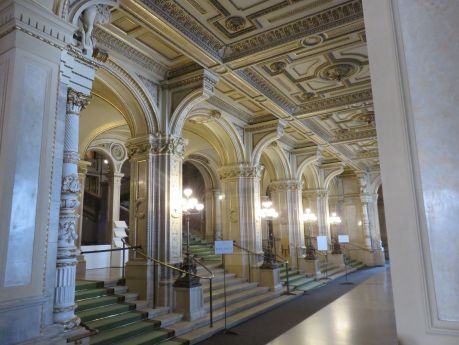
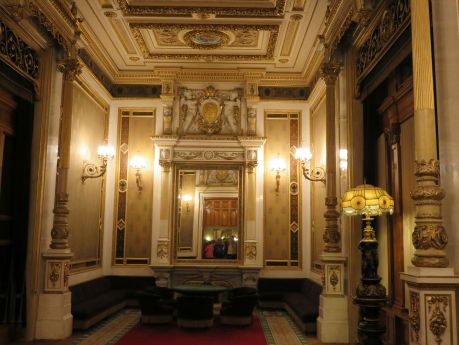
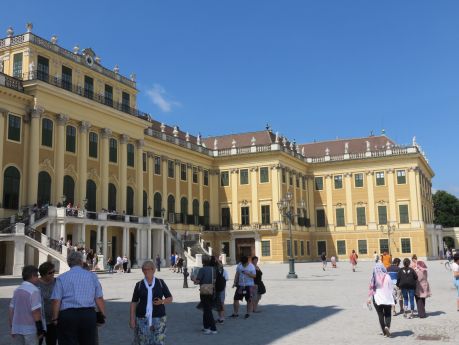

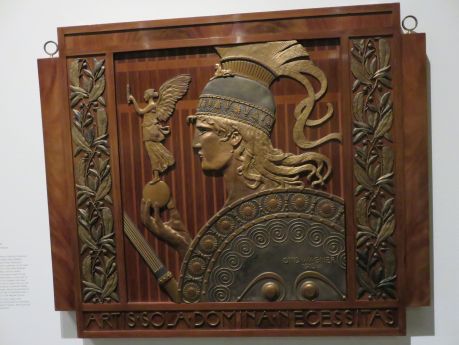

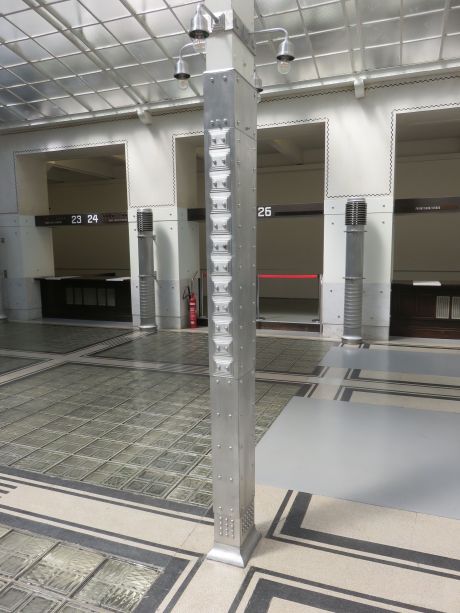

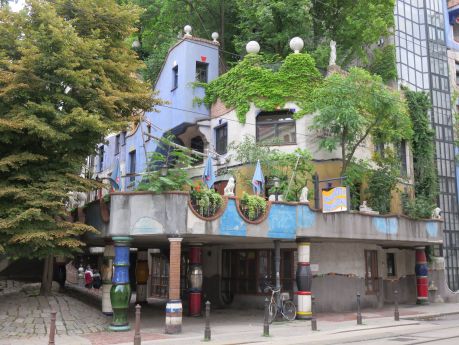
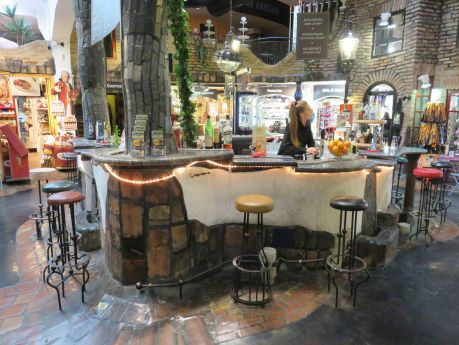
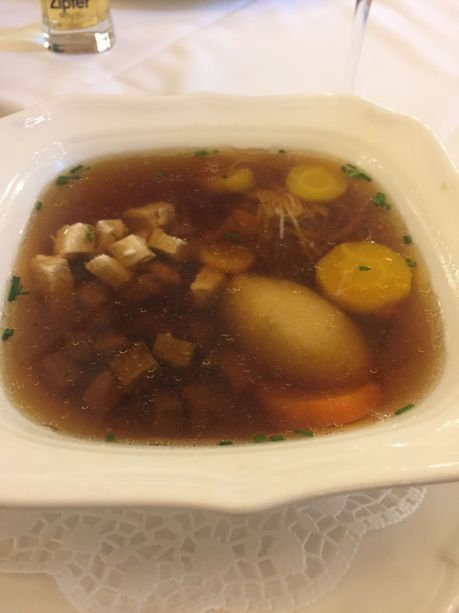


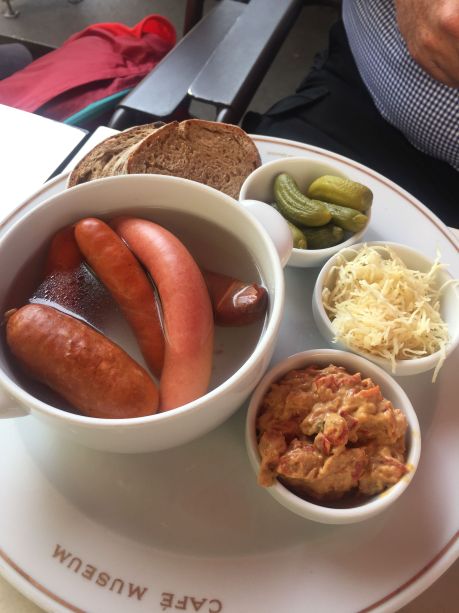

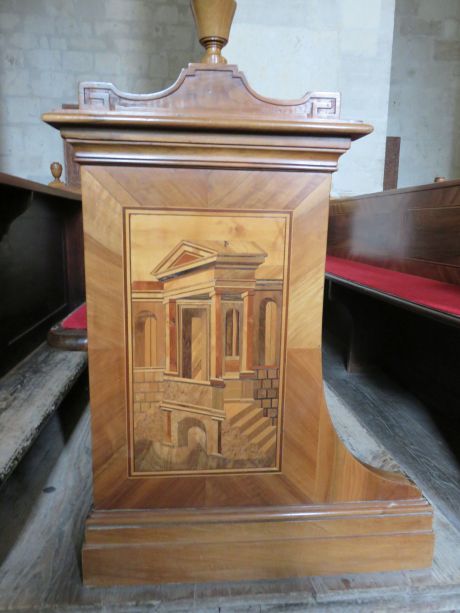

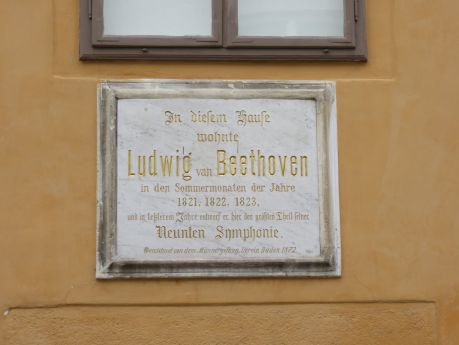

Leave a Reply
Want to join the discussion?Feel free to contribute!